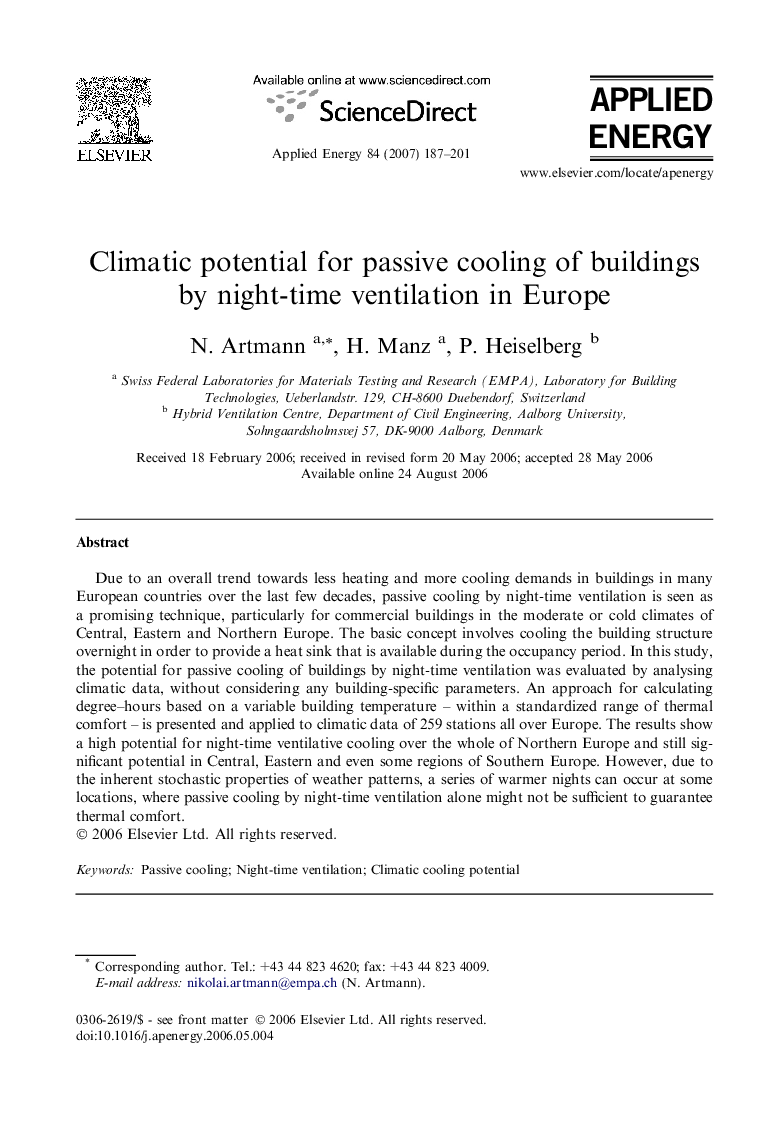| Article ID | Journal | Published Year | Pages | File Type |
|---|---|---|---|---|
| 245332 | Applied Energy | 2007 | 15 Pages |
Due to an overall trend towards less heating and more cooling demands in buildings in many European countries over the last few decades, passive cooling by night-time ventilation is seen as a promising technique, particularly for commercial buildings in the moderate or cold climates of Central, Eastern and Northern Europe. The basic concept involves cooling the building structure overnight in order to provide a heat sink that is available during the occupancy period. In this study, the potential for passive cooling of buildings by night-time ventilation was evaluated by analysing climatic data, without considering any building-specific parameters. An approach for calculating degree–hours based on a variable building temperature – within a standardized range of thermal comfort – is presented and applied to climatic data of 259 stations all over Europe. The results show a high potential for night-time ventilative cooling over the whole of Northern Europe and still significant potential in Central, Eastern and even some regions of Southern Europe. However, due to the inherent stochastic properties of weather patterns, a series of warmer nights can occur at some locations, where passive cooling by night-time ventilation alone might not be sufficient to guarantee thermal comfort.
